How To Set White Balance
When it comes to white balance, in that location are several ways to accomplish it. Honestly, I call back I have tried them all! Finding the best one for your shooting fashion is important.
Y'all may like to set a custom white balance in camera or adjust it in an editing program such every bit Lightroom or Photoshop. Whichever way you choose to accost WB (White Balance) information technology is a stride that can't be skipped.
Nosotros are going to await at different ways to obtain a right neutral white residue. I volition compare several different ways and tools to use and hopefully it will help yous decide the all-time way for your shooting style.
Some of the links in this mail service are affiliate links. Thank you in advance for supporting Click information technology Up a Notch®.
What is white balance?
If you have taken a photograph at night indoors and the photograph appeared to have a xanthous colour to information technology, that is because the white balance was off.
White remainder is the color of the image. Some images appear more warm or orange and some photographs are cooler or more than blue. Yous set the WB to achieve the desired colour.
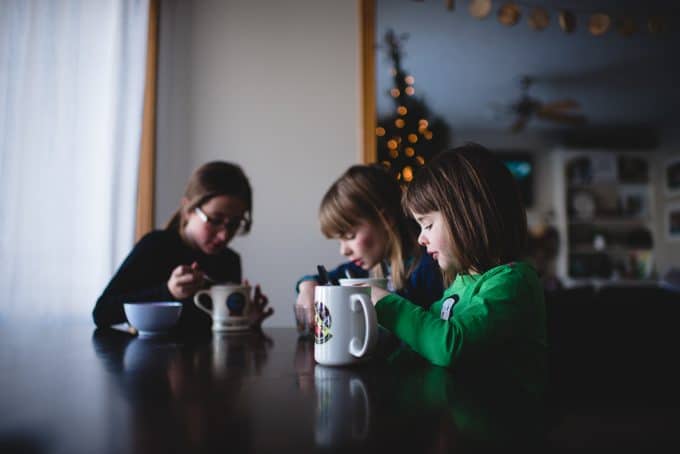
What does white balance exercise?
WB plays a huge role in the issue of an image. When commencement to edit an paradigm, one of the first things I do is right exposure, then WB.
Y'all can accept the all-time focus, best limerick, and perfect lighting, but without good color, the prototype is going to be missing something or in really technical photography terms, just await wonky.
How to set white remainder
When information technology comes to setting your WB you lot have a few options. Don't worry, nosotros will be going over all of them and so you know what will work all-time for you.
Attempt to set up white balance in camera
There is an car white balance setting on your camera that yous can use. Or y'all can adjust it manually using Kelvin (check to see if your photographic camera has this setting as not all cameras exercise). You can use a white piece of paper, a gray card, or an Expodisc. When using one of these options you volition desire to set your camera up for custom white residue. This will allow your camera to read the light on one of these options and gear up your white balance accordingly.
Aim for an accurate or consequent color
White residuum can besides be subjective. Some people adopt warmer images, some prefer libation images.
The indicate of using a WB tool is to get accurate color, but too consistent color, which will brand managing your images much easier one time you get them off of the camera and into a photo editing plan regardless if you prefer a warmer or libation edit as a finished prototype.
Y'all tin can edit in post processing
Of course white balance tin exist tweaked in Lightroom or Photoshop, but for me, the easiest way to ready WB is in photographic camera with minimal changes in an editing.
Stressing over WB is ane of my least favorite aspects of photography, so I cull to get information technology equally shut to perfect as I can, so there is less stress about it on the back cease.
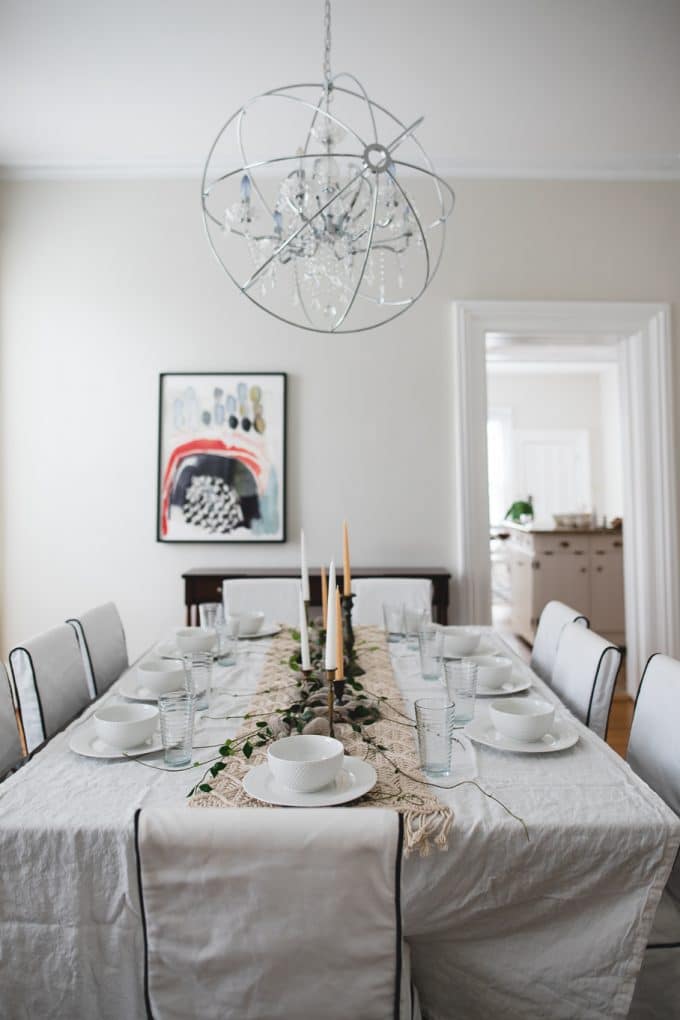
How to use machine white balance (AWB)
I remember most people when start starting out begin with auto white balance. Usually as you upgrade cameras, the AWB feature gets better and ameliorate. I retrieve in that location being a huge divergence when
This is the easiest of the options as far as setting your camera, but probably the nearly fourth dimension intensive one time the image has been uploaded to an epitome editing programme. In that location are many well established photographers that find AWB to piece of work not bad for them with minimal piece of work in editing, merely unfortunately, this has never been the case for me.
The better your exposure in camera, the meliorate the AWB feature will be too. Underexposed images appear bluish, overexposed done out of color, then when using AWB, perfect exposure is of import.
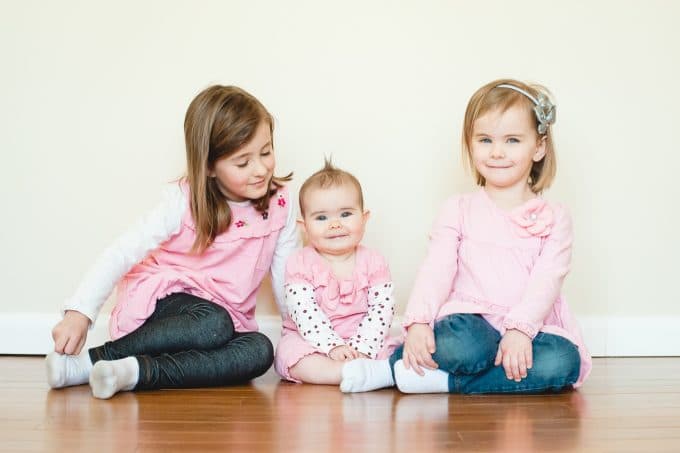
Pros to AWB
- Like shooting fish in a barrel to use. You tin can shoot away in any lighting during a shoot without irresolute settings.
Cons to AWB
- May require more editing in your editing program of choice.
- Can change from image to paradigm depending on how your camera mensurate the light, where custom white remainder is consistent from image to image until you change it.
Using a Grey Menu to set white residuum
There are many, many brands on the marketplace that I'grand sure practice a fantastic chore. Here'south a link to a great ane to check out. They come in different sizes. The ane pictures below 1 is an 8×ten which makes it piece of cake to fill the frame for a measurement, but makes it more hard to deport effectually on shoots.
It tin can be used to ready exposure as well as white balance. To set exposure, you lot identify it in the lighting condition that you will exist using, set your exposure to the center.
And then the custom white balance can be prepare post-obit the instructions for your camera. This ane needs to exist replaced equally it has been scribbled on. I didn't do it!
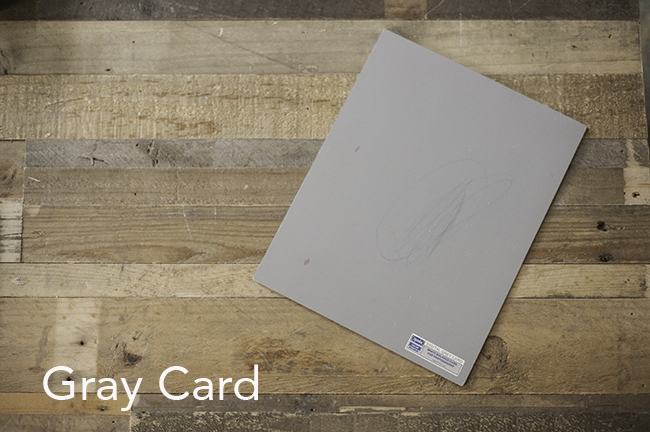
Read more: How to set up custom white residue
How to use a gray card in editing
Place the gray card in the lighting condition that you will be using and snap a quick picture with information technology in the frame. And so you lot tin can continue to shoot away while in the same lighting. Whatever alter of lighting will require another quick image with the gray card in it.
Afterward, in your photo editing plan, you can use the white balance tool to set your white balance past clicking on the grey card in the test images and applying that white balance to all of the images taken in that lighting condition. So, repeat for each additional change in lighting conditions.
Set a custom white balance
Set up a custom white residue (CWB) in camera. Using the greyness bill of fare this way will require minimal piece of work after in editing considering your white remainder volition exist applied to all of your images in the photographic camera instead of afterward in an editing programme.
Every camera model will vary, and some make it easier than others, but take a picture of the grayness card and the camera automatically applies that white balance to all of the images you accept until you change your CWB or alter your camera setting to another course of white balance, such as AWB or Kelvin.
When using a grey carte du jour, this is the method that I prefer, and my camera makes information technology actually easy to do this without going into a menu. If you are unsure of how to practise this, look in your camera manual under Custom White Remainder and there should be instructions on how to do then.
How to use Kelvin to adjust white residual
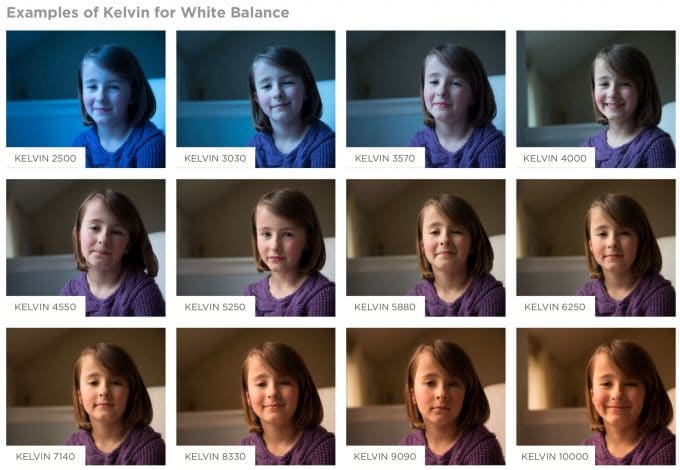
Kelvin is a great style to set white balance. I use this method a lot, mostly when I am outdoors. I may tweak it in Lightroom or ACR a little bit, but for the most role information technology is pretty minimal unless at that place is mixed lighting, which tends to go tricky no matter how you choose to set CWB.
Determine the color of your lighting and set your camera to a temperature of color. This method takes some practice and information technology may take some testing besides to go it right.
While I'k am not perfect at choosing the right temperature every time, it is easy to adjust in an editing plan because for the most office you move the slider either to the bluish to cool it downwardly or to the yellow to warm it upwards. I like to employ Kelvin a lot when I'grand outdoors.
My favorite settings for Kelvins are:
– Using natural low-cal – 5250K
– Using artificial indoor light – 3300K
Read more: How to use Kelvin for White Balance
Pros of using Kelvin
- Information technology doesn't crave any extra equipment and information technology gets me pretty close to where I want my white balance to be.
Cons of using Kelvin
- Due to color casts indoors from walls, carpet, etc, information technology isn't quite as accurate for me indoors as it is for me outdoors.
- It only accounts for lighting from the xanthous to blueish ranges. Fluorescent lighting can also add a mix of green/magenta, so the tint will also demand to be adjusted more aggressively in mail service processing when using Kelvin in those type of lighting conditions.
Using an ExpoDisc for white rest
I also really love the ExpoDisc for white balance. It is my go-to for white balance when I am indoors. After using this tool, I panic if I have misplaced it, because I know that it will have me longer to edit my images without information technology.
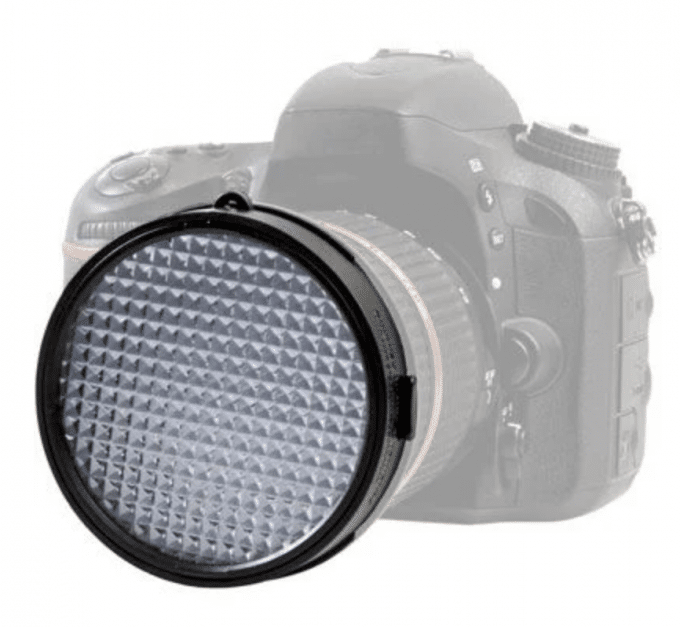
Using the Expodisc, meter for your discipline, and so signal your camera at the about dominant low-cal source of the room or if outdoors at the calorie-free source that is on your subject.
For example, if you are using the light streaming in from a window, follow the instructions for your camera model to set a custom white balance, then take a film with the Expodisc covering your lens pointed toward the window. And so your CWB is set up and you lot can continue to take pictures until you motion your discipline or the color of light changes.
Read more: How to use the ExpoDisc to perfect your white balance
White canvas of paper to set white balance

If you are in a pinch and prefer to set a custom white residue, but don't have a white balance tool, or aren't comfy with Kelvin, yous tin always use a white sail of paper.
This method is used just like the gray card, either equally a picture of the white paper and adjusting WB in an editing program, or setting the CWB in photographic camera following the directions in your camera transmission.
Pros to using a white sail of newspaper
- It is cheap and easy. If you aren't comfortable with Kelvins and are in a pinch, a white canvass of paper is meliorate than naught in some cases.
Cons to using a white canvas of paper
- White paper comes in many different colors of "white". So, you volition get different results depending on the color of your "white" piece of paper.

Photos to show different methods
Okay, tons of movie to follow. The post-obit are images of the gray card using all of the different techniques mentioned in a higher place:
I was really surprised at how different all of the images look. These were all taken inside a few minutes an there oasis't been whatever changes other than resizing and adding text to the images.
Using a grayness card

I like the expect of the Greyness Card the best in this series of images. The colour is the closest to the actual color in the room.
Using a white slice of paper
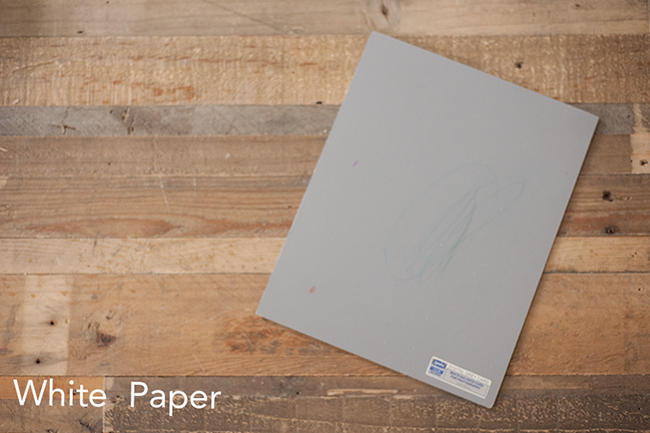
I used a piece of white card stock equally my "white" paper. This one is a tad out of focus (sorry!) only it is actually shut in color to the gray menu.
Using auto WB
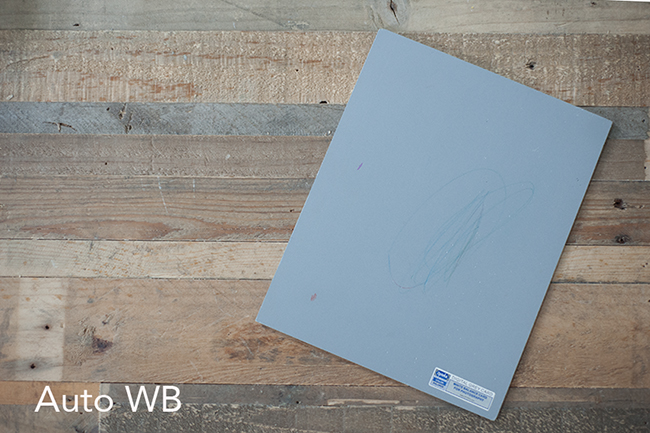
Auto did the worst job. When checking the RGB numbers (which for a neutral gray color should in a perfect world be the same) the Ruby, Green, and Blue were all about x-12 points apart.
In an epitome with a grayness card, that would exist a quick set, simply without a gray card it might cause some problems when dealing with an image with out a neutral colour to check white balance with.
Example of using Kelvin
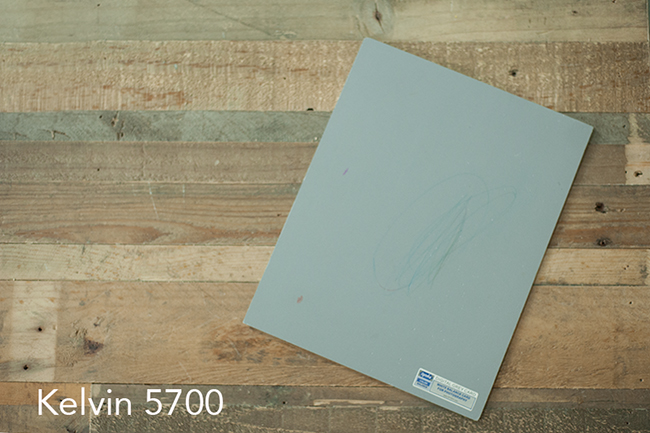
I was a footling surprised past the following image being off then much. Information technology is really cyan. If you compare to the more than "neutral" images, it looks a little bluish greenish or cyan. When I was using Kelvin more than in my everyday shooting, I usually needed to add ruby-red to my images. This would explicate why!
Using an Expodisc
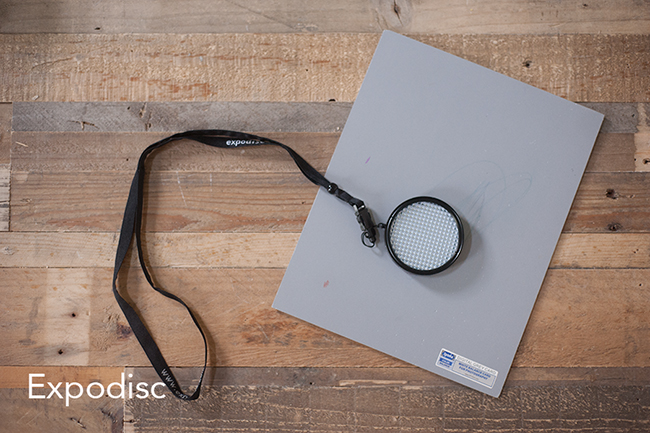
I utilise the expodisc almost exclusively indoors. I was a fleck surprised that it didn't practise as well as the grey menu. When I looked at the RGBs in Lightroom, the Carmine and Dark-green were equal and the Blue was a little high. Subsequently adding a trivial yellowish, I had to add a tiny flake of dark-green. It was a quick set, but one I didn't really expect.
Setting the Scene
And this is the area where I took these images. The lite was coming from the doors pictured here. My sassy little one was in the chair either 90 degrees to those doors or 45 degrees. I was continuing camera right for the majority of the images.
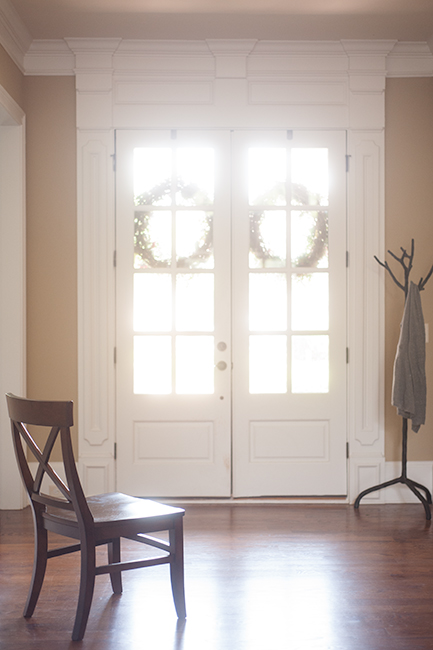
Side by side upward are pictures of my lovely assistant. Oh, what a little processed will buy you.
These are not SOOC images, still, I did very minimal work to them. I did not bear on the temperature slider, but I did add a tad of contrast to each epitome bc Lightroom imports mine every bit flat images….not very pretty.
AWB

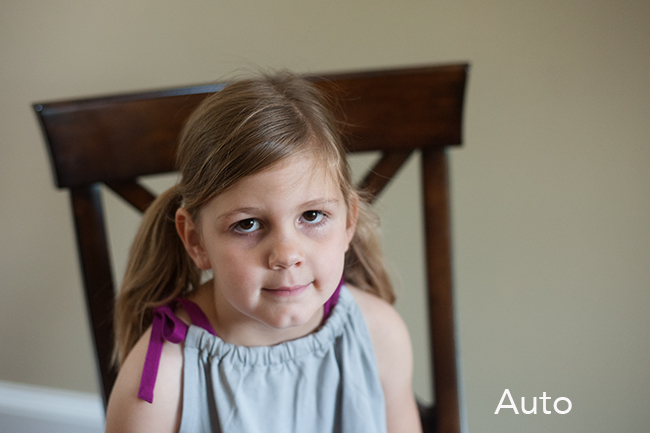
Gray Carte
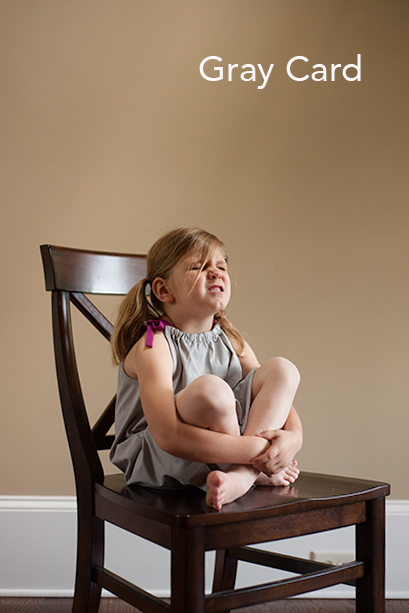
White Paper

ExpoDisc
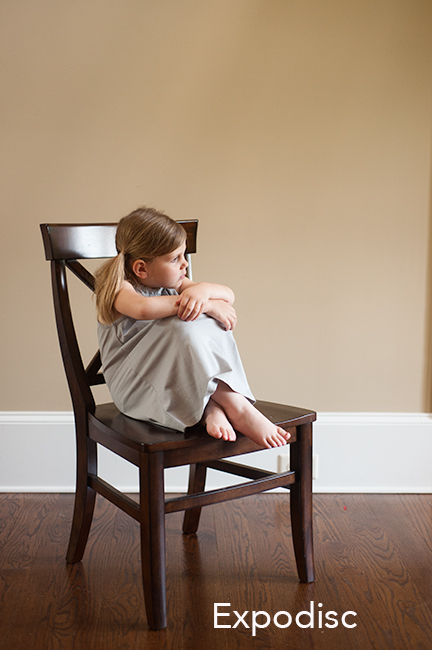
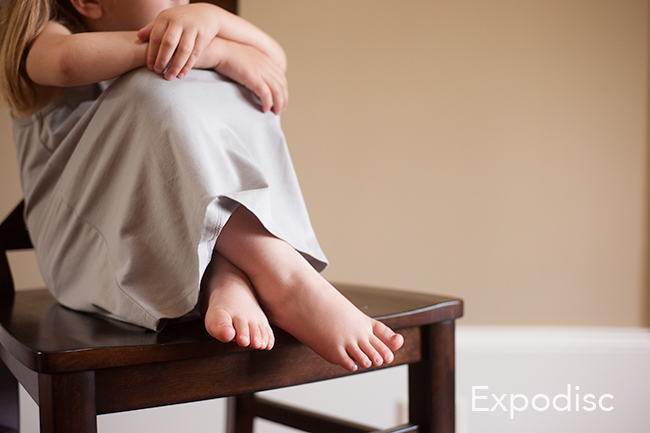
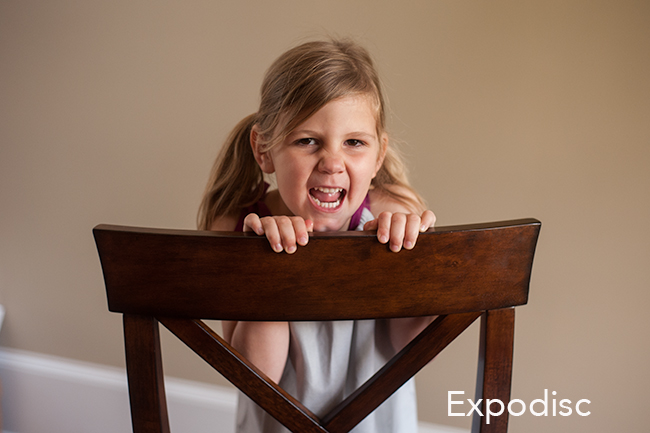
Kelvin
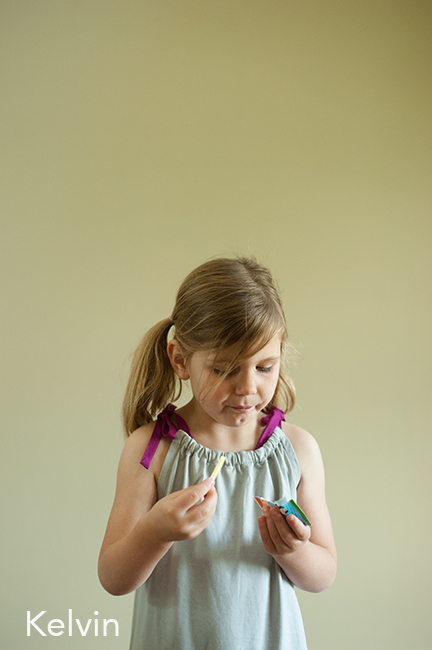
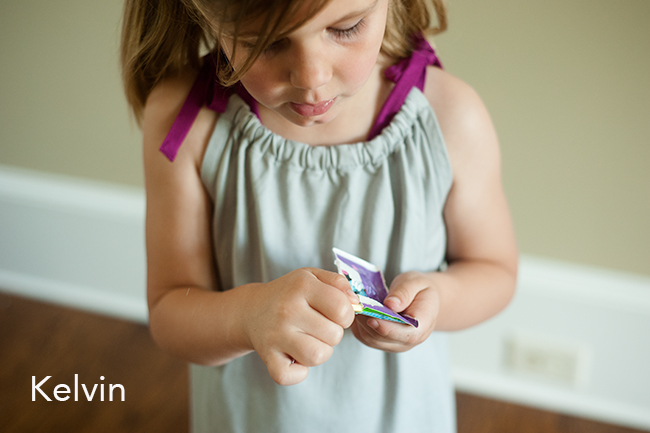
Examples of WB methods outdoors
And thanks to my other banana for helping me with a few outdoor snaps. Again, exposure tweaked a tad, and a tiny contrast was added in Lightroom, merely no other changes or edits were made.
AWB

Disclaimer: He wasn't crying considering of me. He was angry at his big sister for riding off with the cookies….while he still had a mouthful.
Gray Card
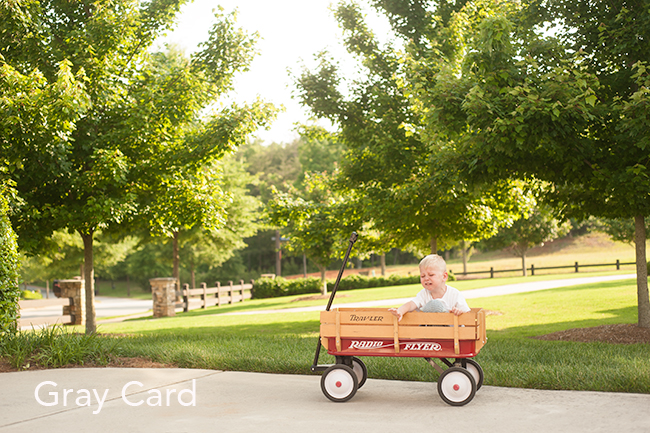
White Paper:
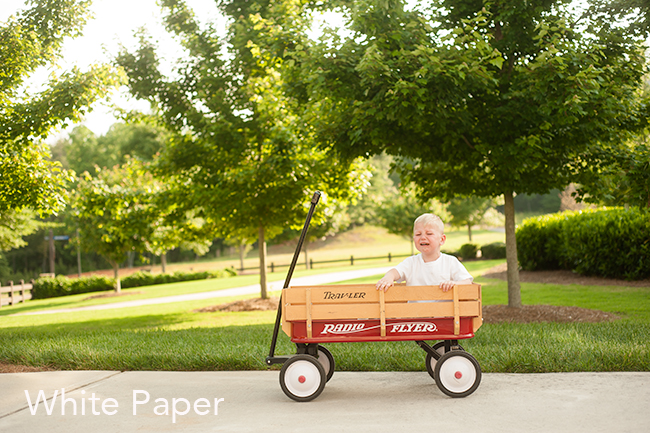

Expodisc:
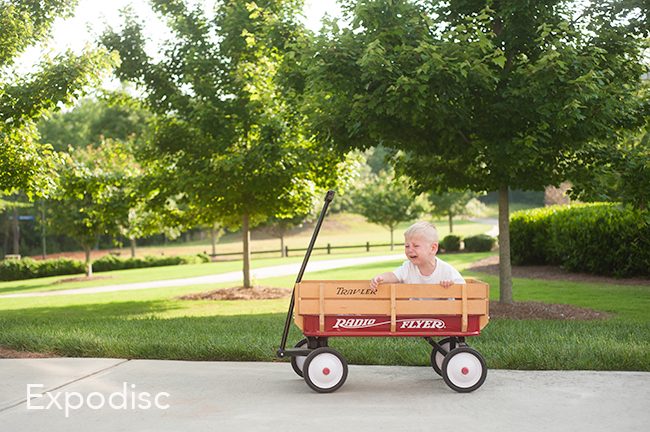
Kelvin
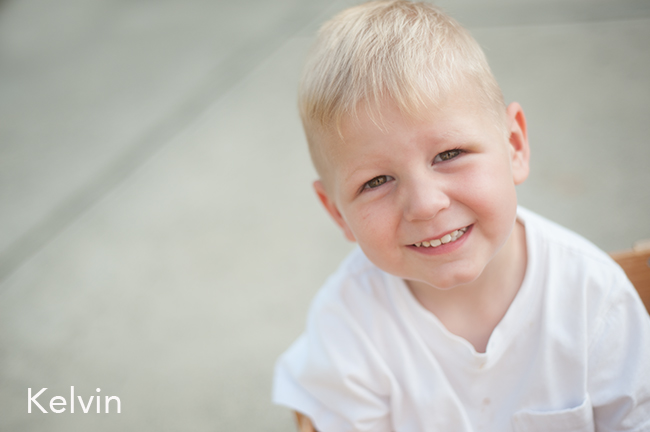
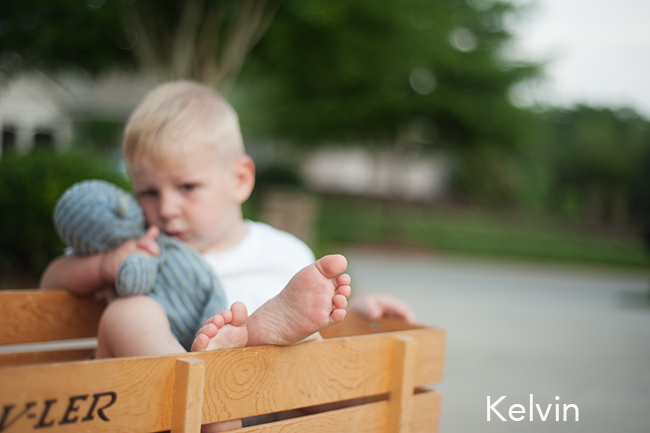
While all of these look very dissimilar, they are all within an acceptable range, depending on taste. Once in Photoshop, I took measurements on the driveway concrete and all only Kelvin and white paper were within a few points of the RGB being equal. Skin measurements were also pretty close, except for the white newspaper, which was a little wonky, but to the eye doesn't await horrible. Auto did a much better job outdoors than indoors. The results expect much more like the Expodisc in these examples.
How to conform white balance in Lightroom and in Photoshop
Here is a video on how to correct white balance in Lightroom that will be helpful when using AWB in camera (or tweaking white balance in general).
Read more: How to correct white balance in Lightroom
If you utilize Photoshop rather than Lightroom, I accept a video for that editing software as well.
FAQs About White Residual
How practice yous fix white residuum?
You tin alter the white remainder settings in camera using AWB, CWB, or Kelvin. If y'all didn't get the chance to fix it while shooting your images, yous can employ an editing software similar Lightroom and arrange it at that place. Either style, yous can commonly fix the white residual eventually.
Should you lot utilise auto white balance?
This definitely depends on your camera. Some cameras are really practiced when information technology comes to AWB others seem to struggle. I personally don't use AWB because it means I will most probable have to fix white balance later. Accept a few pictures using the methods above and come across how your photographic camera holds up. You lot never know what will piece of work best for you!
What is daylight white balance?
Since temperature in photos is measured by using Kelvin, daylight sun is measured every bit 5250K. So if you are trying to achieve a daylight warmth, you need to take Kelvin at a minimum of 5250K.
Is white rest the same equally exposure?
No, white balance is the about the color and exposure is about the light. For WB you want to make sure your temperature and tint are right. For exposure yous desire to make certain y'all have the proper amount of light in the photo.
Source: https://clickitupanotch.com/white-balance-comparing-different-methods/

0 Response to "How To Set White Balance"
Post a Comment